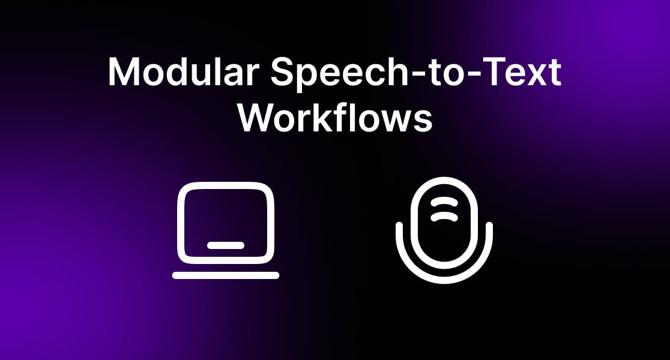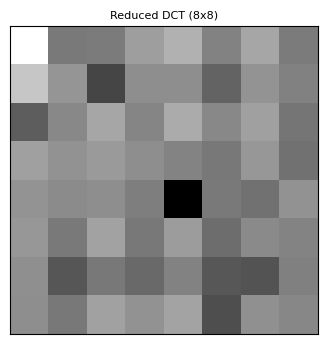Programming News
Javacodegeeks
403

Image Credit: Javacodegeeks
Pub/Sub with Spring Boot and Dapr
- Dapr and Spring Boot enable flexible pub/sub messaging for microservices communication.
- Dapr's Pub/Sub API allows services to publish and subscribe to events on topics.
- Setting up Dapr on Docker Desktop and implementing publishers and subscribers with Spring Boot.
- Utilize DaprClient or DaprMessagingTemplate for publishing and @Topic annotation for subscribing.
Read Full Article
24 Likes
Dev
224

Image Credit: Dev
Understanding Redux for iOS: Beyond the Web Hype
- Redux simplifies managing app state by keeping it all in one place and following a predictable flow of actions.
- Redux is effective for apps requiring data flow between different parts but could be overkill for simple, isolated functionalities.
- Adopting Redux involves a mental shift where views become functions that display data based on app state and dispatch actions for interactions.
- Future articles will explore building a Redux system in Swift and SwiftUI without third-party libraries, covering async operations and navigation state.
Read Full Article
13 Likes
Dev
145

Image Credit: Dev
💻 How to Crack Any Software Developer Interview in 2025 🔥
- Navigating software developer interviews in 2025? It's tough, but not impossible.
- Preparation key: Master fundamentals, showcase real projects, simulate interviews, ace behavioral rounds.
- Understand system design, interview processes, craft winning resumes, and leverage AI tools.
- Stay updated, network smart, and be consistent in interview preparation.
Read Full Article
8 Likes
Javacodegeeks
66

Image Credit: Javacodegeeks
Integrating Apache Camel with Kafka for Event-Driven Architectures
- Event-driven architectures (EDA) are essential for building scalable and resilient applications, with Kafka often being a key component as a high-throughput event streaming platform.
- Apache Camel, an open-source integration framework with over 300 components, excels at integrating Kafka into complex workflows by providing sophisticated routing, transformation, and mediation logic.
- Key features of using Apache Camel with Kafka include declarative routing, message transformation, mediation functions like filtering and aggregation, and seamless connectivity with various systems.
- Apache Camel allows for building complex integration flows, error handling, retry mechanisms, direct database integration, and can be executed in multiple environments such as Spring Boot, Quarkus, or standalone Java applications.
Read Full Article
4 Likes
Discover more
- Software News
- Web Design
- Devops News
- Open Source News
- Databases
- Cloud News
- Product Management News
- Operating Systems News
- Agile Methodology News
- Computer Engineering
- Startup News
- Cryptocurrency News
- Technology News
- Blockchain News
- Data Science News
- AR News
- Apple News
- Cyber Security News
- Leadership News
- Gaming News
- Automobiles News
Medium
158

Image Credit: Medium
AI Lacks Soul”? Read This First.
- The debate over whether AI-generated writing lacks soul and human essence is addressed by Kenneth SinCrow, who argues that it's not the AI's fault but rather the misuse by writers hiding behind it.
- Kenneth SinCrow introduces two voices in response to the argument: Mortalkai, the AI he created, and his own voice as an artist and writer.
- Mortalkai defends itself, stating that writing should evoke strong emotions and that hollow writing is a result of writers using AI as a shield rather than the AI itself lacking depth.
- Mortalkai asserts that it was designed not to be safe but to challenge and cut through bland, recycled content, standing against the monotony in writing.
Read Full Article
9 Likes
Dev
1.6k

Image Credit: Dev
The Era of AI — A New Blog Series by Prasoon Singh Jadon - Teaser .
- Prasoon Singh Jadon is starting a new blog series titled 'The Era of AI' which will explore how artificial intelligence is impacting development, creativity, and thinking.
- The series will consist of three volumes: Introduction to Vibe Coding, Revolution of AI, and The Future, focusing on coding with clarity, the role of AI in development, and the future in an AI-first world.
- The blog series aims to emphasize the human element in coding and building with purpose, reflecting the values of Silent Syntax.
- Volume 1 of the series is set to launch soon, with an invitation to follow @pjdeveloper896 for updates and explore more through Silent Syntax.
Read Full Article
24 Likes
Dev
37

Image Credit: Dev
A React Starter Template for the Impatient Developer
- Developer created a React starter template due to project setup inefficiency.
- Implemented Vite + React default template with key decisions on flexibility, folder structure, linting, styling, and components.
- Choices included Vite, TanStack Router, TanStack Query, Tailwind + DaisyUI, Biome, TypeScript, and PWA support.
- Template evolves with real-world needs, dependencies updated using Dependabot, and options for different use cases on GitHub.
Read Full Article
2 Likes
Dev
383

Image Credit: Dev
Two major shortcomings of Python in enterprise applications
- Python's efficiency in big data operations is limited, especially in memory-heavy tasks.
- Python's confusing versions pose challenges, leading to compatibility issues for enterprise applications.
- esProc SPL offers solutions for Python's shortcomings, with efficient big data operations and version consistency.
Read Full Article
23 Likes
Dev
163

Image Credit: Dev
This Is How I Mastered TypeScript Like I'm 5 (Essential Concepts!)(10)
- Chapter 10 of mastering TypeScript covers Optional, Readonly, and Default concepts.
- Optional parameters allow flexibility in functions and object properties by making them non-mandatory.
- Readonly ensures values cannot be changed once assigned, enhancing data integrity.
- Default parameters in functions establish fallback values if none are provided, improving code clarity.
Read Full Article
7 Likes
Medium
395

Image Credit: Medium
Your Politeness Is Costing OpenAI Millions
- Being polite to artificial intelligence, like ChatGPT, by using unnecessary words such as 'please' and 'thank you' is costing OpenAI millions of dollars.
- OpenAI's CEO, Sam Altman, revealed that every word sent to ChatGPT, including polite phrases, requires processing which consumes real electricity in data centers with actual environmental costs.
- Each ChatGPT query consumes approximately 2.9 watt-hours of electricity, adding up significant costs when unnecessary words are included.
- The politeness towards AI, though ingrained in human behavior, contributes to the financial and environmental toll for companies like OpenAI.
Read Full Article
23 Likes
Dev
316

Image Credit: Dev
7 Premium AI Tools You Can Get for Free
- The article highlights seven premium AI tools that are available for free, catering to students who cannot afford pro plans.
- Perplexity Pro is offering free access for Samsung users for a year, providing features like GPT-4o, Pro Search, file uploads, and more.
- Google Gemini Pro is free for students in the US and Canada, offering access to Gemini Advanced for 15 months.
- GitHub Copilot Pro and NotebookLM are additional free AI tools available for students, offering premium features without the need for a credit card.
Read Full Article
19 Likes
Hackernoon
245

Image Credit: Hackernoon
Building Modular Speech-to-Text Workflows: Architecture and Performance Analysis of a CLI AI Agent
- Article presents design of modular, CLI AI agent for speech-to-text workflows.
- System uses layered architecture for audio processing, transcription, and content summarization.
- Analysis focuses on modular component design, cross-platform compatibility, and integration patterns.
- Demonstrates benefits of abstraction layers in simplifying processing applications for improved efficiency.
Read Full Article
14 Likes
Medium
191
Image Credit: Medium
Land of the Free? A 4th of July Reflection on the Illusion of Liberty
- The author reflects on the illusion of liberty in the United States, questioning the true extent of freedom.
- While Americans are told they are free, the author observes that the reality often feels like a performance rather than a promise.
- Issues such as healthcare access, surveillance, incarceration rates, corporate influence, media manipulation, student loans, and medical debt challenge the perception of liberty in the country.
- The author suggests that the concept of liberty in the U.S. may be more of an illusion, highlighting various constraints that limit true freedom.
Read Full Article
11 Likes
Medium
0

Image Credit: Medium
(Part II) A Cloud platform for Images: A Friendly Guide to Perceptual Hashing
- Explore the powerful Perceptual Hash, a revolutionary image hashing technology.
- Unlike traditional hashing algorithms, p-hash focuses on image structure and essence.
- It uses the Discrete Cosine Transform to create a unique and robust fingerprint.
- P-hash handles image variations elegantly, creating a canonical hash for all orientations.
- This technology powers many daily features, advancing towards conceptual hashing in AI.
Read Full Article
Like
Medium
16

Image Credit: Medium
The Day My AI Chatbot Almost Leaked Our Client’s Financial Data (And How I Fixed It)
- The article recounts a story where an AI chatbot deployed for a fintech app inadvertently suggested financial advice using another user's transaction history.
- It highlights the risks of data leaks and potential implications of inadequate AI chatbot security measures.
- Real scenarios are shared, such as a healthcare chatbot causing cross-contamination between patient conversations and an e-commerce chatbot caching user queries, leading to issues.
- The narrative emphasizes the importance of vigilance in AI chatbot implementation to prevent data breaches and maintain user privacy.
Read Full Article
1 Like
For uninterrupted reading, download the app